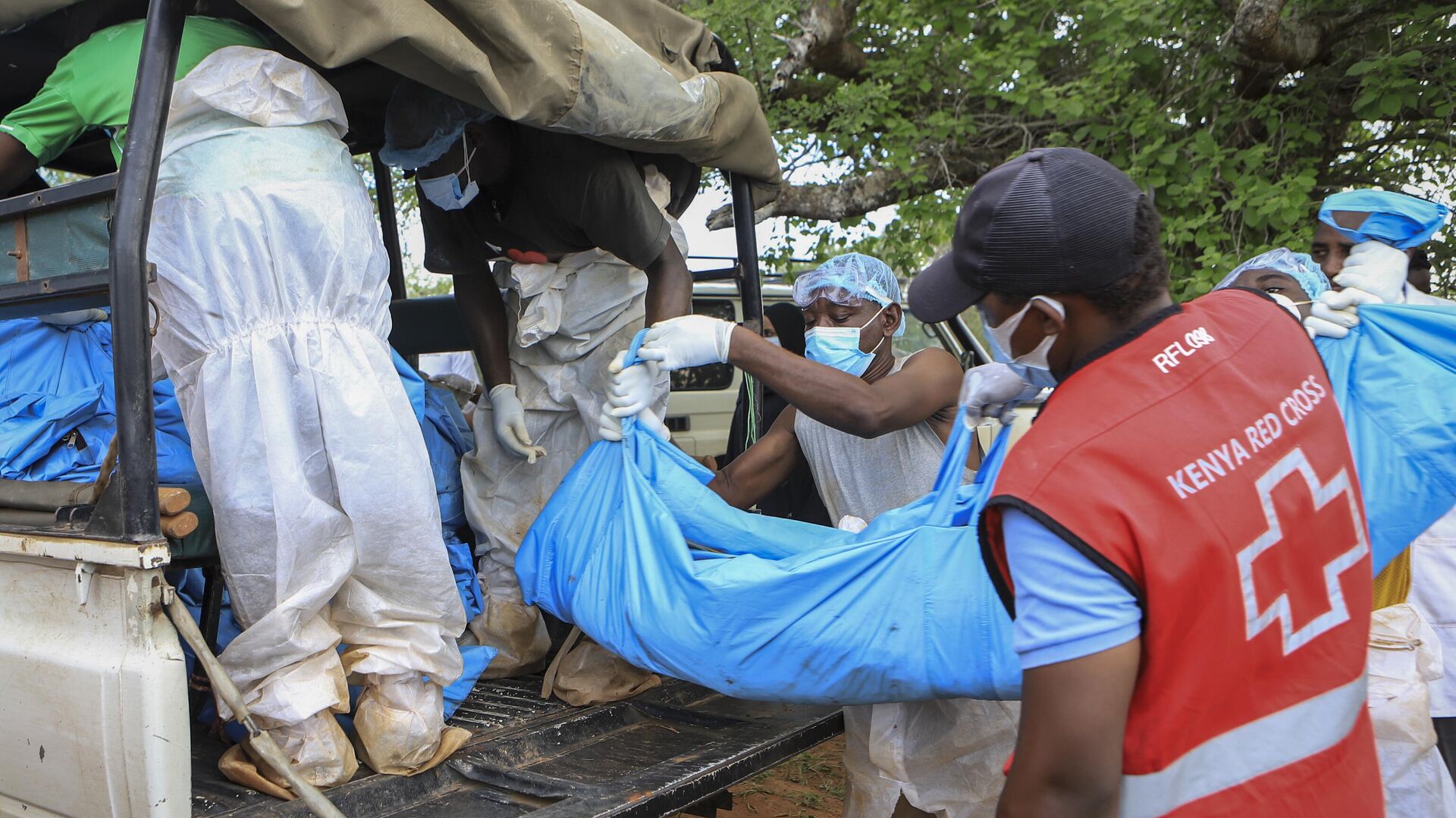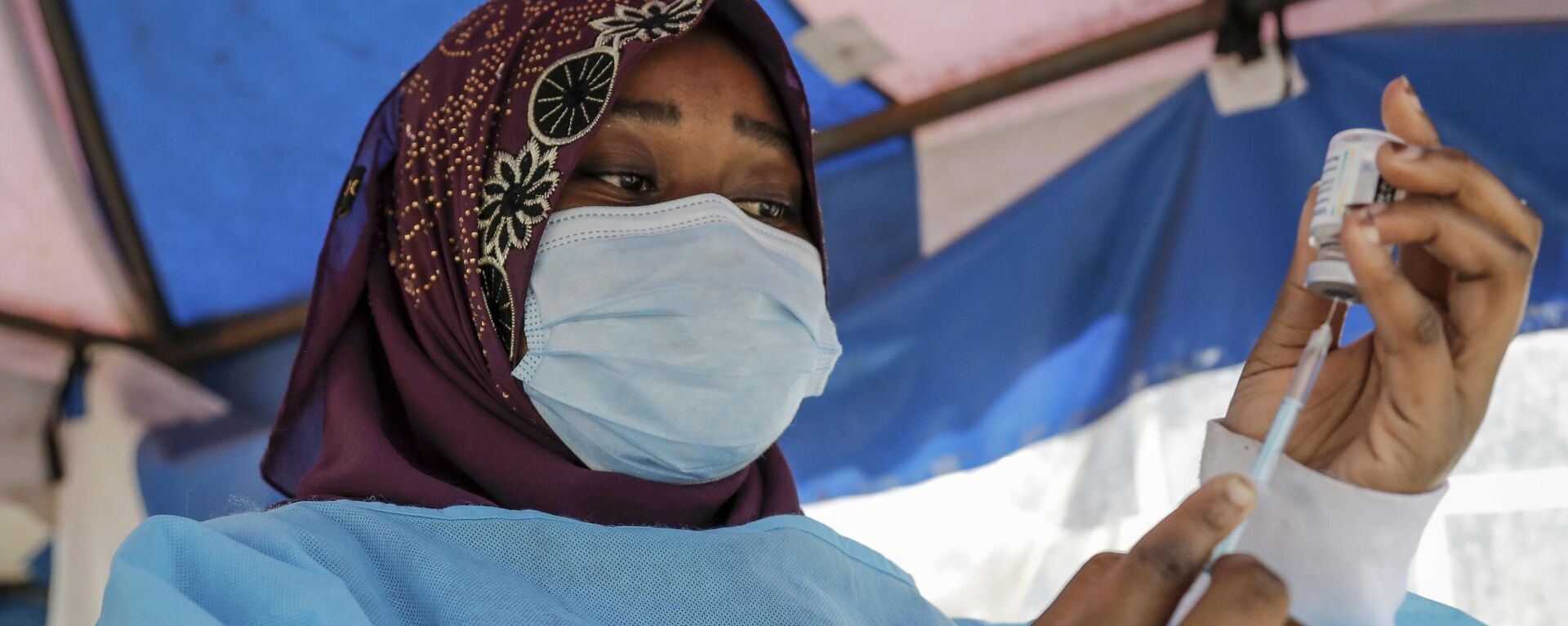https://en.sputniknews.africa/20230511/mystery-illness-strikes-kenya-leaving-9-dead-1059183865.html
Mystery Illness Strikes Kenya, Leaving 9 Dead
Mystery Illness Strikes Kenya, Leaving 9 Dead
Sputnik Africa
More than 80 people became seriously ill and at least 9 people died as a result of an unusual disease that struck the settlement of Location in Marsabit County.
2023-05-11T16:52+0200
2023-05-11T16:52+0200
2023-05-11T17:54+0200
kenya
malaria
world health organization (who)
vaccine
medicine
https://cdn1.img.sputniknews.africa/img/07e7/05/09/1059142582_0:159:3078:1890_1920x0_80_0_0_59e168dcf08b361b6a612a9331aaaccc.jpg
More than 80 people became seriously ill and at least 9 people died as a result of an unusual disease that struck Kargi Location, in Marsabit County. This sickness unknown to science may be a dangerous type of malaria, based on preliminary studies.According to Moses Galoro, the senior chief of the Kargi, six adults and three children aged from one to three years died from this disease. Patients traveled outside of Marsabit County from satellite camps in the Archer's Post and Merrill areas. Of the 27 patients examined, only five tested positive for malaria. Galoro called on all sides to act quickly before the entire nation was destroyed.The last victim, who died at the Kargi Medical Center, had flu-like symptoms – an enlarged spleen, severe headache and yellowish eyes similar to kala-azar (the second-deadliest parasitic disease in the world).However, doctors say that visceral leishmaniasis, also known as kala-azar, cannot be ruled out. Visceral leishmaniasis is characterized by irregular bouts of fever, weight loss, enlargement of the spleen and liver, and anemia. According to the World Health Organization (WHO), in more than 95% of cases, this can lead to death if you do not adhere to a treatment plan.The outbreak of the illness occurred two months after the Kenyan Institute of Medical Research detected an invasive mosquito species in the Laisamis and Saku subcounties of Marsabit County in Kenya’s north. This mosquito, Anopheles stephensi, is native to South Asia and the Middle East. It transmits the two malaria parasites that pose the greatest risk of severe illness and death: Plasmodium falciparum and Plasmodium vivax.
https://en.sputniknews.africa/20230424/world-immunization-week-what-challenges-does-africa-face-1058778341.html
kenya
Sputnik Africa
feedback@sputniknews.com
+74956456601
MIA „Rossiya Segodnya“
2023
Sputnik Africa
feedback@sputniknews.com
+74956456601
MIA „Rossiya Segodnya“
News
en_EN
Sputnik Africa
feedback@sputniknews.com
+74956456601
MIA „Rossiya Segodnya“
Sputnik Africa
feedback@sputniknews.com
+74956456601
MIA „Rossiya Segodnya“
kenya, illness, unusual disease, who, invasive mosquito species.
kenya, illness, unusual disease, who, invasive mosquito species.
Mystery Illness Strikes Kenya, Leaving 9 Dead
16:52 11.05.2023 (Updated: 17:54 11.05.2023) The illness was first reported two weeks ago, and the outbreak occurred two months after the Kenyan Medical Research Institute discovered an invasive mosquito species in the Laisamis and Saku districts of Marsabit County.
More than 80 people became seriously ill and at least 9 people died as a result of an unusual disease that struck Kargi Location, in Marsabit County. This sickness unknown to science may be a dangerous type of
malaria, based on preliminary studies.
According to Moses Galoro, the senior chief of the Kargi, six adults and three children aged from one to three years died from this disease. Patients traveled outside of Marsabit County from satellite camps in the Archer's Post and Merrill areas. Of the 27 patients examined, only five
tested positive for malaria. Galoro called on all sides to act quickly before the entire nation was destroyed.
"We have lost nine people so far and at least 80 others are bedridden in the villages in connection to a mysterious disease outbreak. I appeal for an urgent intervention by all stakeholders before we lose the entire population," Galoro noted.
The last victim, who died at the Kargi Medical Center, had flu-like symptoms – an enlarged spleen, severe headache and yellowish eyes similar to kala-azar (the second-deadliest parasitic disease in the world).
However, doctors say that visceral leishmaniasis, also known as kala-azar, cannot be ruled out. Visceral leishmaniasis is characterized by irregular bouts of fever, weight loss, enlargement of the spleen and liver, and anemia. According to the World Health Organization (WHO), in more than 95% of cases, this can lead to death if you do not adhere to a treatment plan.
The outbreak of the illness occurred two months after the Kenyan Institute of Medical Research detected an invasive mosquito species in the Laisamis and Saku subcounties of Marsabit County in Kenya’s north. This mosquito, Anopheles stephensi, is native to South Asia and the Middle East. It transmits the two malaria parasites that pose the greatest risk of severe illness and death: Plasmodium falciparum and Plasmodium vivax.


